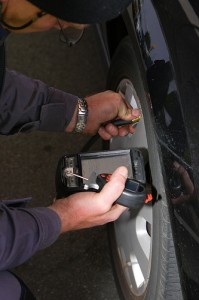 Nitrogen tire inflation isn’t a gimmick. Nitrogen tire inflation isn’t a scam to make money just because air is free. The paid version of a free product isn’t always a fraud to trick people into paying for a horrible product. Nitrogen tire inflation is the exact opposite and as “the paid version of air,” it offers both consumer drivers and managed fleets more value than air-inflated tires could ever provide.
Nitrogen tire inflation isn’t a gimmick. Nitrogen tire inflation isn’t a scam to make money just because air is free. The paid version of a free product isn’t always a fraud to trick people into paying for a horrible product. Nitrogen tire inflation is the exact opposite and as “the paid version of air,” it offers both consumer drivers and managed fleets more value than air-inflated tires could ever provide.
To showcase this value, we’ve compiled 16 fast facts about nitrogen tire inflation, tire maintenance and fuel efficiency. The practice of nitrogen tires isn’t a gimmick. It’s a sustainable, working solution that addresses problems that put holes in people’s wallets, puts greenhouse gases into our atmosphere and puts lives at risk.
- 85 percent of American don’t check their tire pressure regularly
- 54 percent drive on at least one under-inflated tire
- Vehicles driving on under-inflated tires have are three times more likely to be involved in a car accident than vehicles with proper tire pressure.
- The likelihood of a tire-related crash increases as your tire tread wears.
- Nitrogen permeates tire walls up to four times slower than air. With regular air, tires will lose 1 to 2 psi over one months, versus the six months it takes a nitrogen tire to lose that same amount of pressure
- Under-inflated tires can lower gas mileage by 0.4 percent for every 1 psi drop in tire pressure
- Gas mileage can be improved by 3.3 percent by keeping tires inflated to proper pressure
- If 187 million vehicles improved their gas mileage by 3.3 percent, then the U.S would save over 3.7 billion gallons of gas in one year.
- 11 percent of our carbon emissions come from the transportation sector
- Over 300 million tires are disposed of annually in the U.S
- Nitrogen-inflated tires can reduce this amount by up to 30 percent
- Nitrogen reduces the chance of tire failure, such as a blowout, by 50 percent
- Nitrogen also increases tread life by up to 30 percent, improving the tire’s life and its grip to the road
- NASCAR, the airline industry, NASA, and the U.S military have all used nitrogen inflated tires for years
- It can take up to six months for a managed fleet to see the benefits of nitrogen tire inflation, but it only takes 30 to 60 days for a managed fleet to see the financial consequences of poorly-maintained and under-inflated tires.
- Companies such as Michelin, Ford, and Goodyear have publicly expressed their support
for nitrogen tire inflation
Asking people to address these problems themselves by purchasing an air compressor, checking their tire pressure weekly, and topping off their tires themselves (unless you’re a managed fleet that pays people to do this for your vehicles) isn’t a good solution to reducing carbon emissions or to saving gas and gas money. A better solution is to change what’s going into people’s tires so the public doesn’t have to go through the hassle every week and so managed fleets can get more on their tire and fuel investments. A better solution is nitrogen tire inflation.





